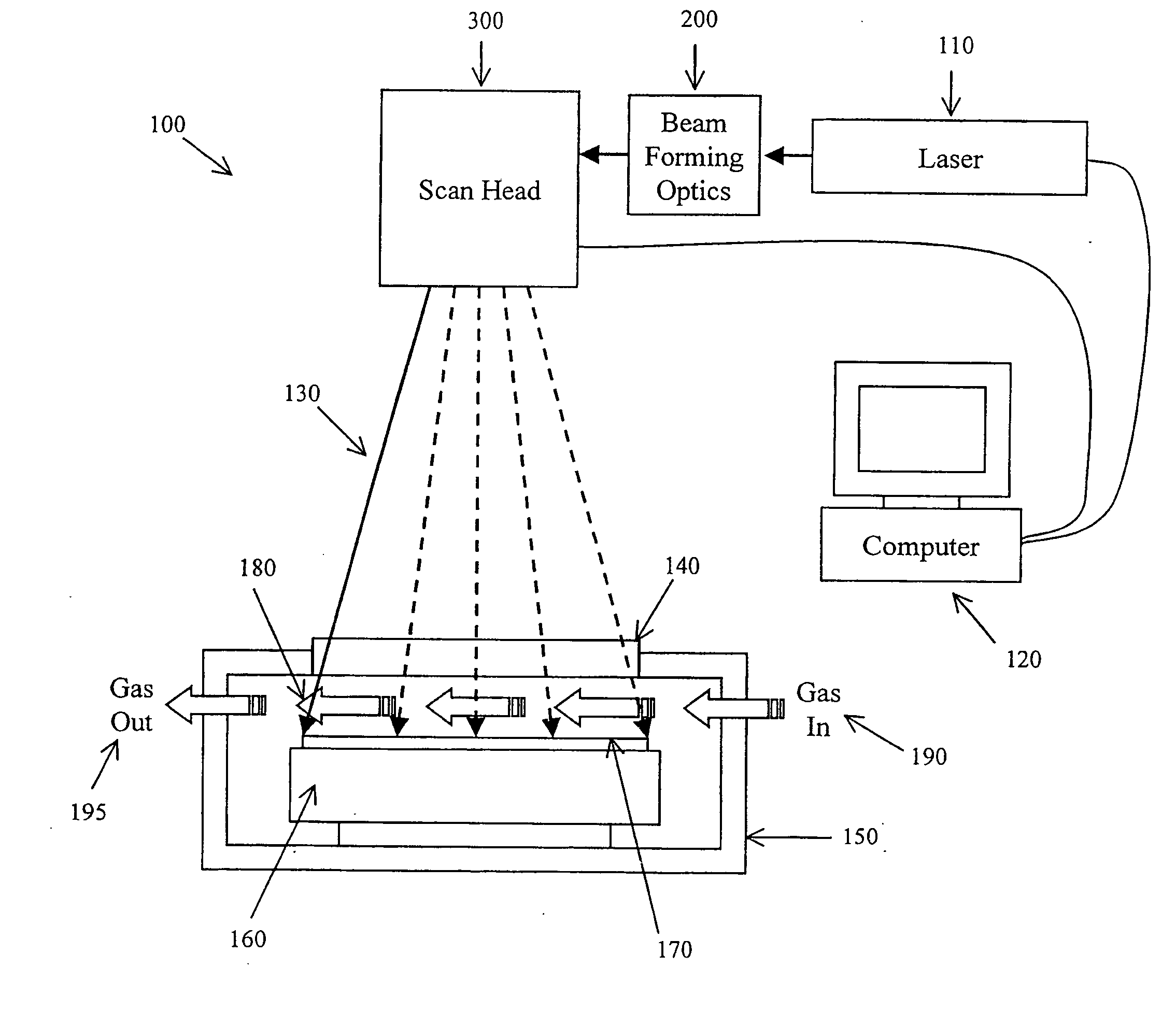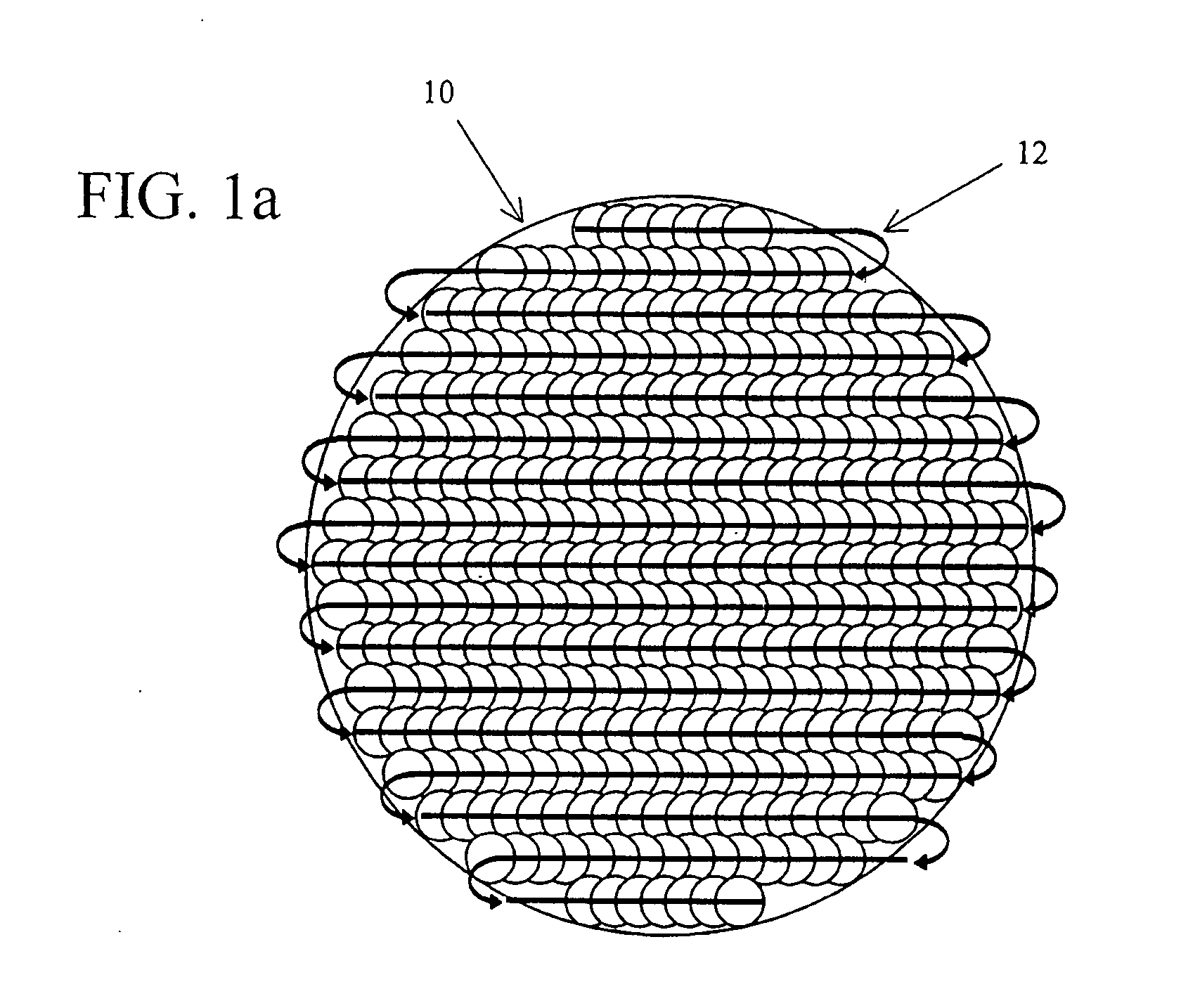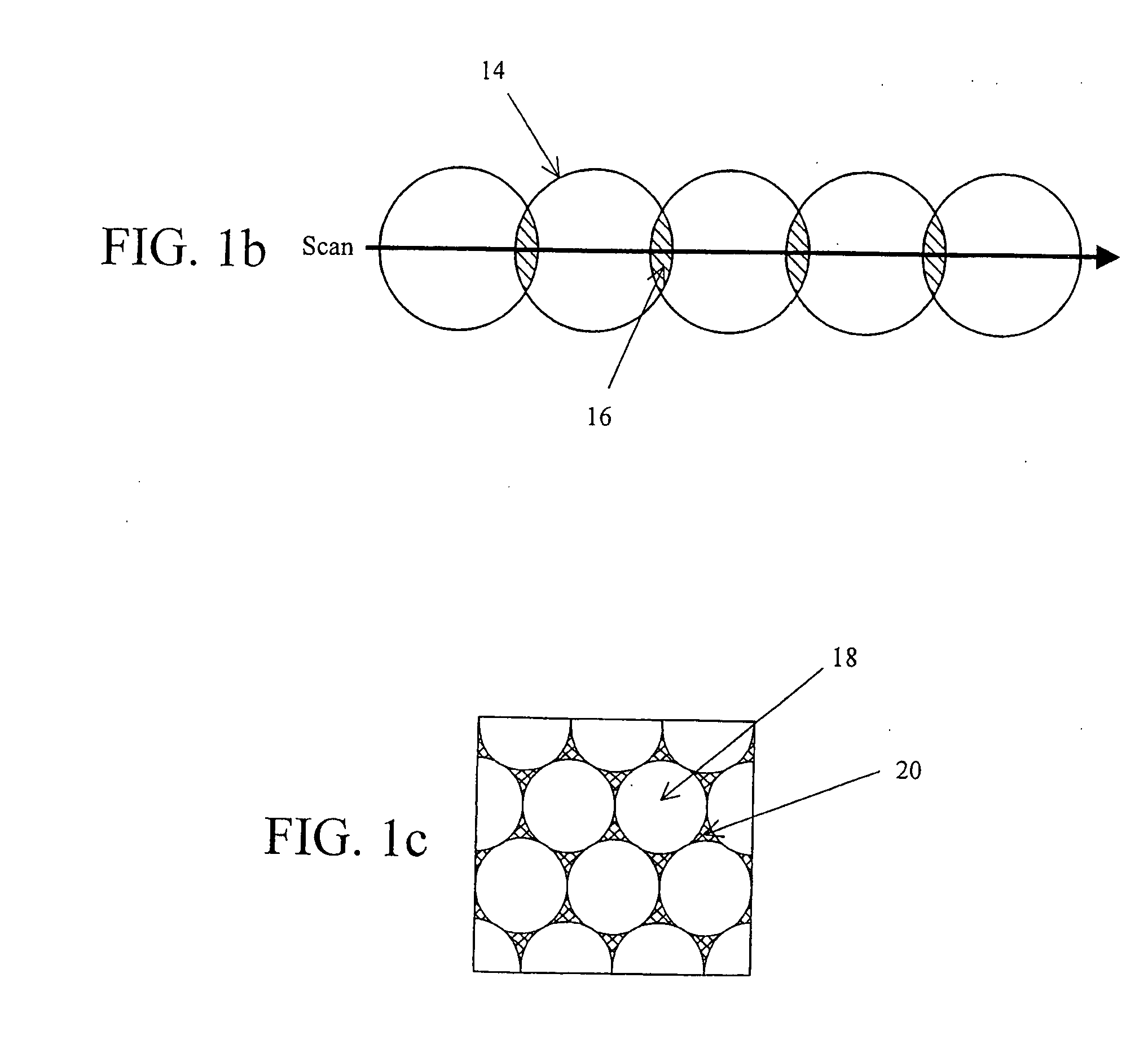Method and apparatus for delivery of pulsed laser radiation
a laser radiation and pulsed technology, applied in laser beam welding apparatus, chemistry apparatus and processes, manufacturing tools, etc., can solve problems such as laser pulse damage, damage to the substrate, and reaches the damage threshold, and achieve the effect of high throughput ra
- Summary
- Abstract
- Description
- Claims
- Application Information
AI Technical Summary
Benefits of technology
Problems solved by technology
Method used
Image
Examples
Embodiment Construction
[0070] In the following description of the preferred embodiments of the invention, a method and apparatus for optimally delivering pulsed laser radiation will be detailed.
[0071] In FIG. 1a, one of several possible conventional scanning methods is illustrated, a two-dimensional serpentine or boustrophodonic scan. An alternative is to “fly back” at the end of each scanned line so that all lines are scanned in the same direction. Another method is a one-dimensional scan with the substrate stepped in the orthogonal direction.
[0072]FIG. 1b illustrates the “double exposure” that results from an attempt, using conventional scanning, to obtain complete coverage. Since the time between pulses is very short (10 to 100 μs) compared to thermal diffusion times that can be on the order of milliseconds, the overlap regions reach higher temperatures and are thereby subject to damage or other unwanted effects.
[0073] If such overlap is avoided by larger pulse-to-pulse spacing, as illustrated in FI...
PUM
| Property | Measurement | Unit |
|---|---|---|
| wavelength | aaaaa | aaaaa |
| wavelength | aaaaa | aaaaa |
| wavelength | aaaaa | aaaaa |
Abstract
Description
Claims
Application Information
 Login to View More
Login to View More - R&D
- Intellectual Property
- Life Sciences
- Materials
- Tech Scout
- Unparalleled Data Quality
- Higher Quality Content
- 60% Fewer Hallucinations
Browse by: Latest US Patents, China's latest patents, Technical Efficacy Thesaurus, Application Domain, Technology Topic, Popular Technical Reports.
© 2025 PatSnap. All rights reserved.Legal|Privacy policy|Modern Slavery Act Transparency Statement|Sitemap|About US| Contact US: help@patsnap.com



